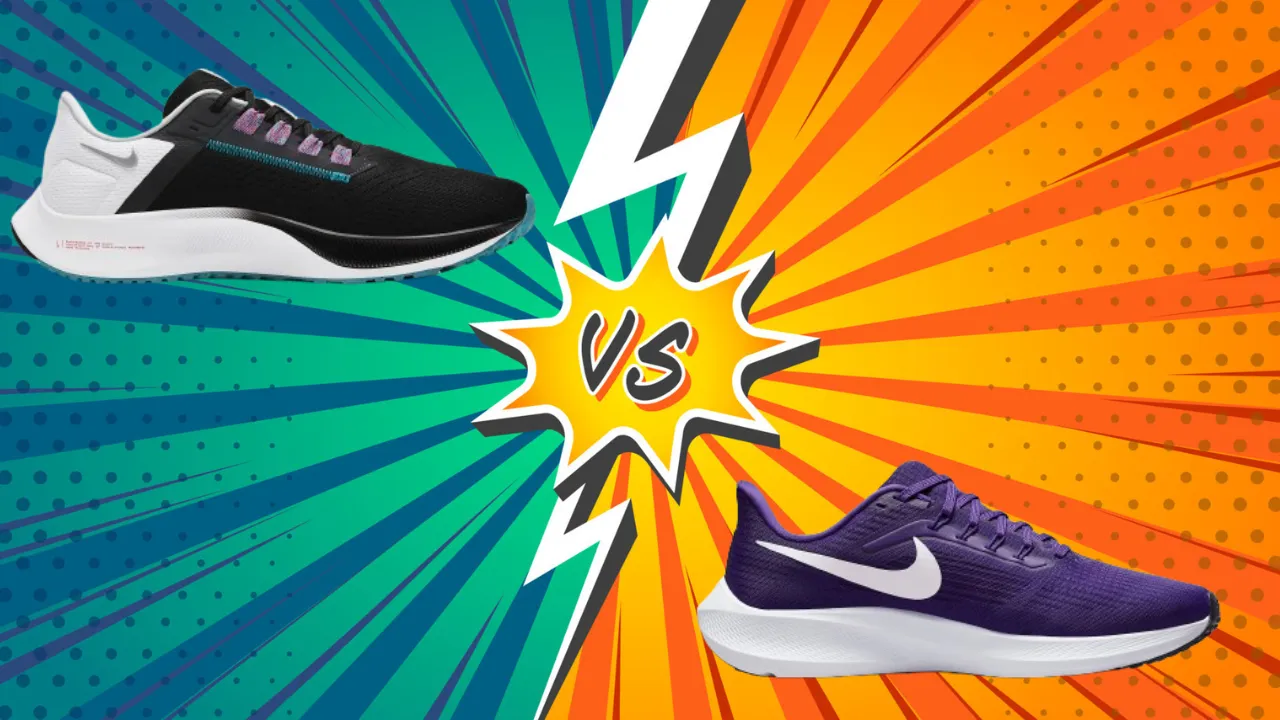Are you an avid runner or someone who loves to stay on their feet all day? Finding the perfect pair of shoes can be a game-changer. In this article, we’ll dive deep into the battle between the Nike Pegasus 38 and the Nike Pegasus 39, two highly sought-after running shoes from the iconic brand.
Get ready to uncover the strengths, weaknesses, and performance capabilities of each model, helping you make an informed decision on which one is better suited for your needs.
Comparison Table between Nike Pegasus 38 and Pegasus 39:
| Feature | Nike Pegasus 38 | Nike Pegasus 39 |
|---|---|---|
| Launched In | 2021 | 2022 |
| Stability | Neutral | Neutral |
| Flexibility | Flex grooves for extra flexibility | Flex grooves throughout for smooth feel on toe-off |
| Weight | 10.9 oz(men’s),10.2 oz (women’s) | 10.4 oz (men’s), 9.2 oz (women’s) |
| Cushion | Nike React foam + Zoom Air unit | Nike React foam + 2 Zoom Air units (forefoot and heel) |
| OutSole | Rubber outsole with waffle-inspired pattern for traction | Rubber outsole with waffle-inspired pattern for traction |
| Mid Sole | Nike React foam | Nike React foam |
| Upper Sole | Breathable mesh upper | Engineered mesh upper for lightweight breathability |
| Retail Price | $95 – $130 (Amazon) | $130 (Official Site) |
Features Comparision:
1) Materials:
Both the Nike Pegasus 38 and 39 feature a rubber outsole with a waffle-inspired pattern designed to provide exceptional traction on various surfaces. This durable and grippy outsole ensures a secure footing, whether you’re pounding the pavement or hitting the trails.
The insole of Pegasus 38 consist of a comfortable form for cushioning but the 39 boasts extra padding at the tongue and collar for enhanced comfort. As for the upper sole, the Pegasus 38 features a breathable mesh upper that stretches with your foot for a comfortable, adaptive fit.
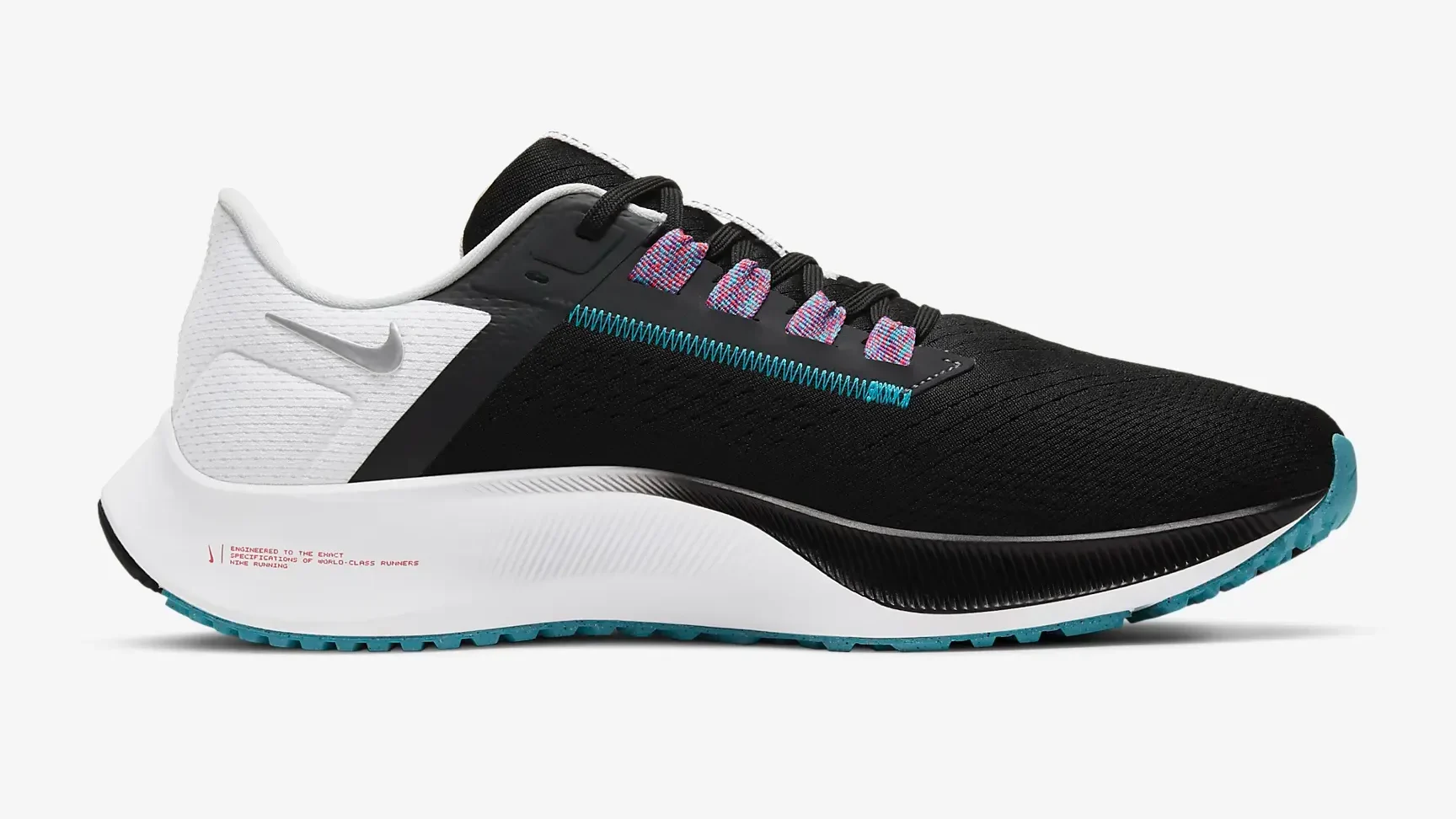
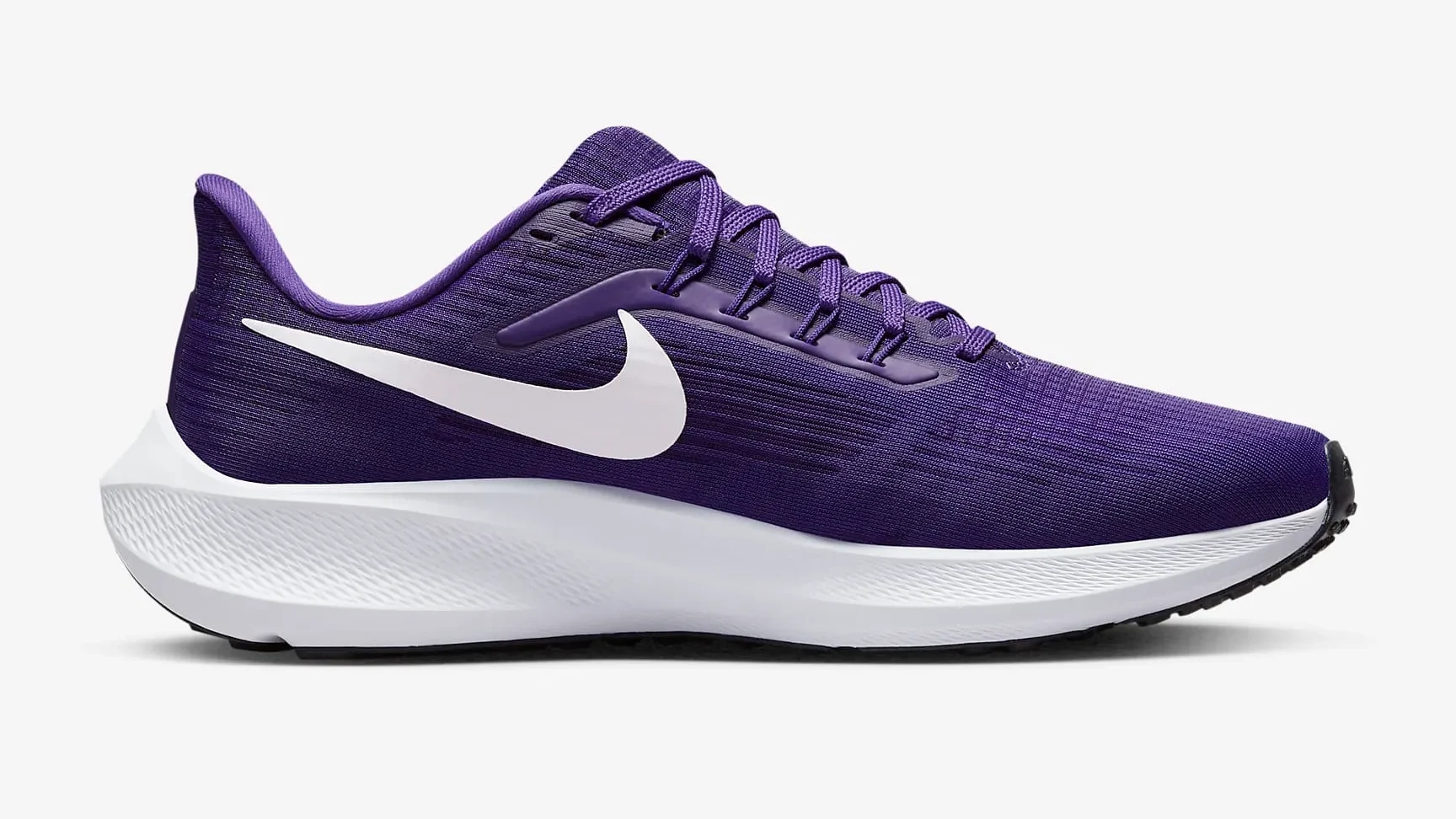
The Pegasus 39 takes it a step further with an engineered mesh upper, which is stronger and more flexible than regular mesh, providing lightweight breathability.
2) Durability:
When it comes to durability, both shoes are built to withstand the rigors of regular use. The Nike Pegasus 38 and 39 feature a rubber outsole that is designed to be durable and long-lasting, ensuring that you can log in mile after mile without worrying about premature wear and tear.
However, the Pegasus 39 has an edge when it comes to the upper. The engineered mesh used in the 39 is not only stronger but also more flexible than the regular mesh found in the 38. This means that the 39 is likely to hold up better against the constant flexing and bending that occurs during running or extended periods of wear.
Additionally, the Flywire technology integrated with the midfoot band in the Pegasus 39 provides additional support and helps keep your foot in place, reducing the risk of excessive stretching or deformation of the upper over time.
3) Fit:
Both the Nike Pegasus 38 and 39 offer a comfortable and secure fit, but with slight differences in their approach.
The Pegasus 38 features a wider forefoot, which allows for more room and wiggle space for your toes. This can be particularly beneficial for runners with wider feet or those who experience toe splaying during long runs. Additionally, the mesh upper stretches and conforms to the shape of your foot, providing a customized fit.
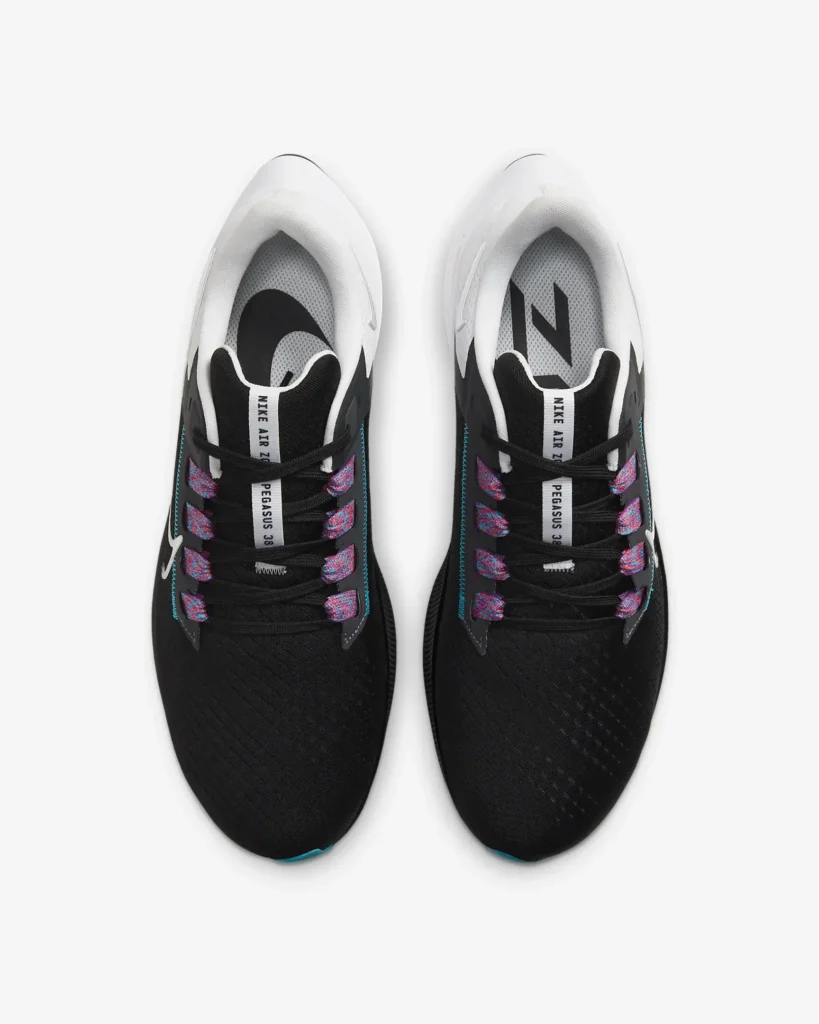
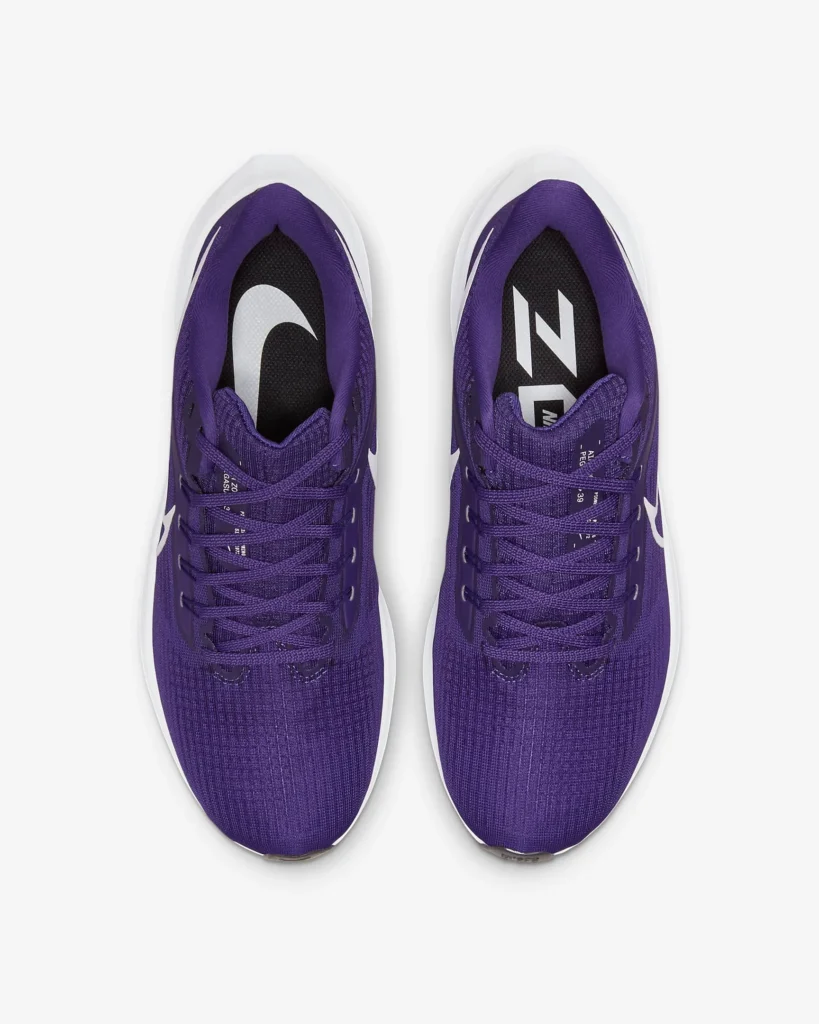
On the other hand, the Pegasus 39 employs Flywire technology integrated with a midfoot band to help keep your foot locked in place. This feature ensures a snug and secure fit, minimizing any potential slippage or unwanted movement within the shoe.
While the 38 prioritizes a roomier forefoot, the 39 focuses on a more secure and supportive fit through its midfoot technology. Ultimately, the choice between the two will depend on your personal preference and whether you value a wider toe box or a more locked-in feel.
4) Stability:
When it comes to stability, the Nike Pegasus 39 has a distinct advantage over its predecessor. The Pegasus 39 incorporates Flywire technology integrated with a midfoot band, which helps keep your foot in place and provides additional support during your stride.
This feature is particularly beneficial for runners who tend to overpronate or require a little extra stability in their shoes. By keeping your foot securely positioned, the Pegasus 39 can help minimize excessive inward or outward rolling, reducing the risk of injury and ensuring a more efficient, stable stride.
The Pegasus 38, on the other hand may offer a stable ride for some runners but those seeking additional support or dealing with overpronation issues may find the Pegasus 39 to be the better option.
5) Cushioning:
Both the Nike Pegasus 38 and 39 offer excellent cushioning, but they differ in their approach and the level of responsiveness they provide.
The Pegasus 38 features Nike React foam, a lightweight and springy material that delivers a plush and comfortable ride. Additionally, it incorporates a Zoom Air unit closer to your foot for added responsiveness with every step.
The Pegasus 39 takes cushioning to the next level by combining Nike React foam with not one, but two Zoom Air units – one in the forefoot and one in the heel. This combination provides a smooth, responsive ride with an energized feel at toe-off, thanks to the additional bounce and cushioning from the dual Zoom Air units.
While both shoes offer ample cushioning, the Pegasus 39 may be the better choice for runners who desire a more responsive and energized ride. However, those who prefer a slightly softer and more cushioned feel might find the Pegasus 38 more appealing.
6) Value For Money:
Both the Nike Pegasus 38 and 39 offer great value, catering to different needs and budgets. The Pegasus 38, available on Amazon between $95 to $130, provides a comfortable and reliable ride with React foam cushioning and a wider forefoot, making it an affordable option for budget-conscious runners.
Meanwhile, the Pegasus 39, priced at $130 on the official site, justifies its premium with advanced features like dual Zoom Air units for responsiveness, engineered mesh upper for durability, and Flywire technology for stability.
You can also potentially find discounts on the official website, making the Pegasus 39 even more affordable. While the 38 excels in affordability and accommodating fit, the 39 delivers a well-rounded, high-performance experience for serious runners willing to invest more.
Performance Comparision:
For Walking:
The Pegasus 38’s wider forefoot and stretchy mesh provide a roomier, more accommodating fit for walking. The Pegasus 39 offers a more energized, supportive feel with dual Zoom Air units and Flywire technology. If prioritizing roomy comfort, the 38 excels. If seeking responsive support, the 39 is better for extended walks.
For Running:
For running, the Pegasus 39 outshines the 38 with its advanced technologies. The 39’s React foam + dual Zoom Air units deliver a smooth, responsive, and energized ride.
The Flywire midfoot band enhances stability and support. While the 38 is capable, the 39 caters better to serious runners’ needs with its well-rounded performance features.
For Plantar Fasciitis:
For plantar fasciitis, the 38’s wider forefoot reduces pressure, and React foam provides cushioning. The 39’s dual Zoom Air units offer better shock absorption and impact protection.
Its Flywire technology stabilizes the foot. Those with mild plantar fasciitis may prefer the 38’s roomier fit, while those with severe cases could benefit from the 39’s support.
For Standing All Day:
The 38 allows more room and flexibility to prevent foot swelling during long standing periods. The 39’s Flywire midfoot band keeps the foot secure, minimizing discomfort from unwanted foot motion.
Both offer React foam cushioning, but the 39’s dual Zoom Air units provide better shock absorption. Choose the 38 for a roomier fit or the 39 for enhanced stability.
Conclusion: Which Is Better For You?
After a comprehensive analysis, it’s clear that both the Nike Pegasus 38 and 39 excel in different areas, catering to diverse needs and preferences.
The Pegasus 38 shines as an affordable option with a roomier fit, ideal for those seeking a comfortable and accommodating ride for walking or everyday use. Its wider forefoot and softer cushioning make it a great choice for those with wider feet or those seeking a more cushioned feel.
On the other hand, the Pegasus 39 emerges as the superior choice for serious runners and those willing to invest in advanced technologies. Its combination of responsive cushioning, enhanced stability, and supportive features make it a well-rounded performance shoe that can withstand the rigors of intense training and competition.
Ultimately, the decision rests on your specific requirements, budget, and priorities. Whether you opt for the Pegasus 38’s comfort and affordability or the Pegasus 39’s cutting-edge performance, you can rest assured that both shoes deliver the quality and reliability expected from the Nike brand.

